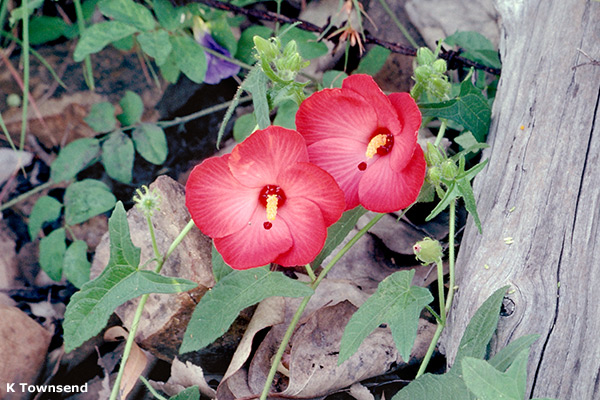General Description:
Abelmoschus moschatus is a perennial species comprising two recognised subspecies. Subsp. moschatus occurs in India, parts of Asia and the Pacific Islands. There are also naturalised occurrences of subsp. moschatus in northern New South Wales. Subsp. tuberosus is found in northern Australia and in islands to the north. It is a delightful, soft, herbaceous trailing plant to 2 metres in diameter with soft hairy stems. It has an underground tuber and dies back to this tuber in the dry season, emerging again with the first substantial rains of the wet season. It is a relative of the edible Okra and tubers and foliage were a source of food for Aborigines.
The leaves are alternate, rough, hairy,heart-shaped or 3-5 lobed with serrated margins, 4-10cm x 4-8.5cm. Flowers are Hibiscus-like, usually watermelon pink but sometimes white or cream – always with a dark centre. Flowers last for one day only but are very prolific and are borne between October and April, flowering time depending on the timing of the wet season.
Black seeds are held in hairy, tough but papery capsules.
Propagation may be from seeds, small tubers or stem cuttings. Seeds germinate readily but some difficulty is often experienced in getting the plant to establish in the ground. Sowing the seeds in situ in a well drained, rocky spot may be the best answer. The plant should be allowed to dry out when foliage dies off during the dry season.

Photo: Keith Townsend
 Australian Native Plants Society (Australia)
Australian Native Plants Society (Australia)













